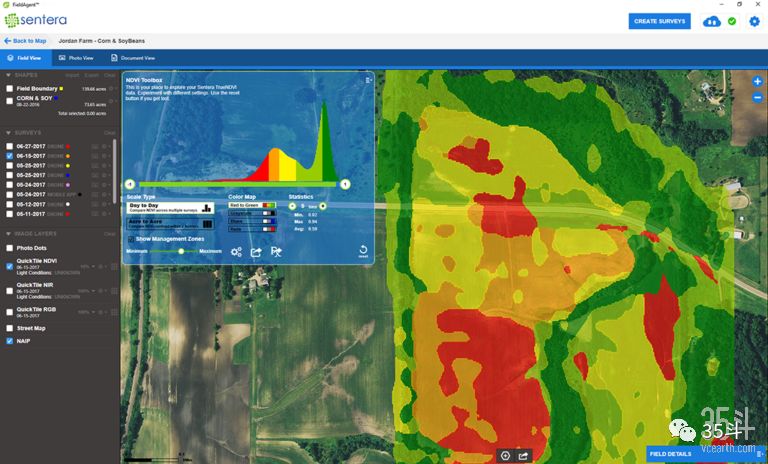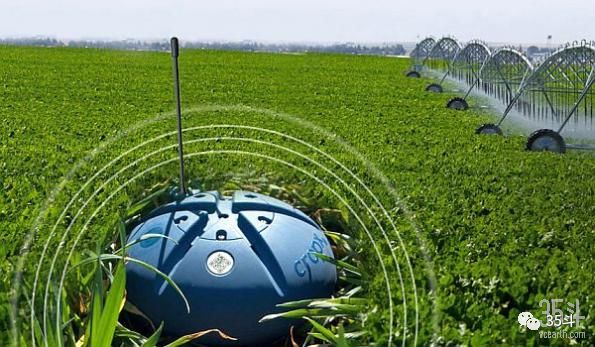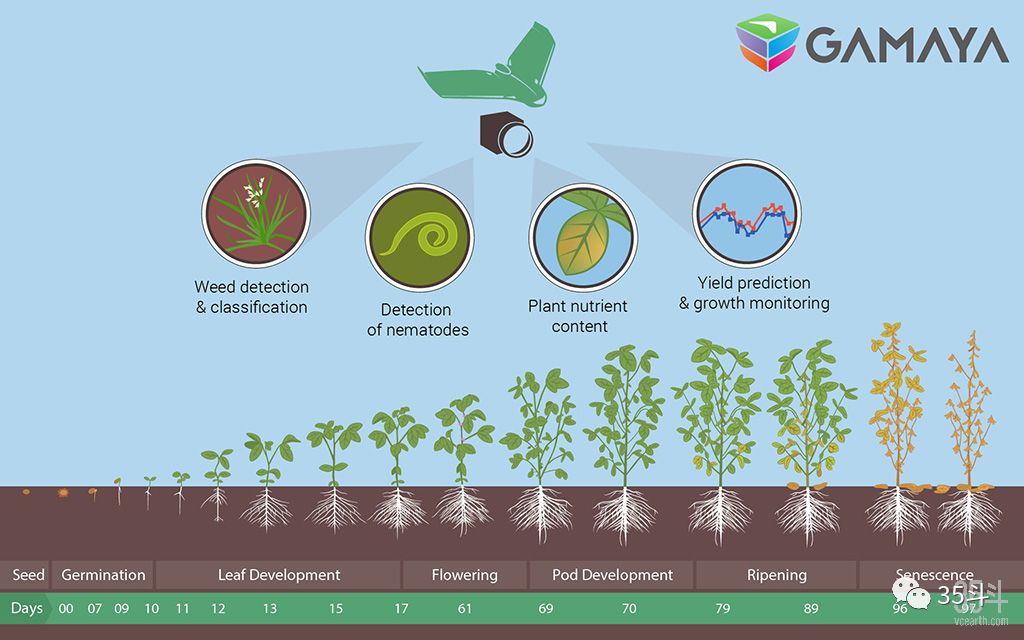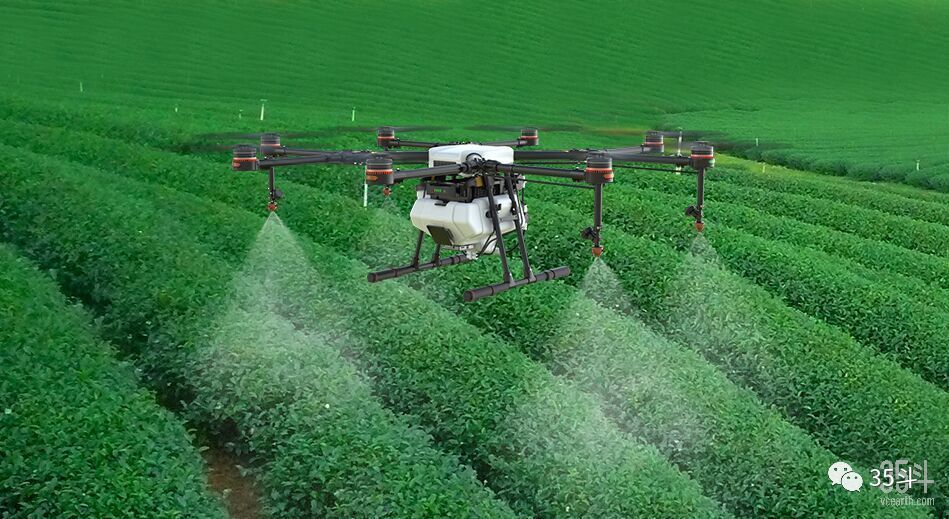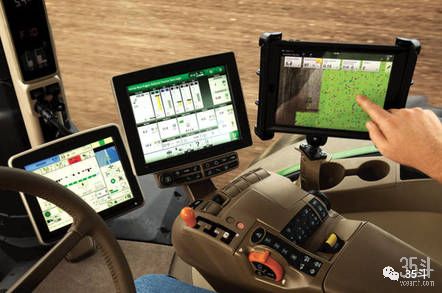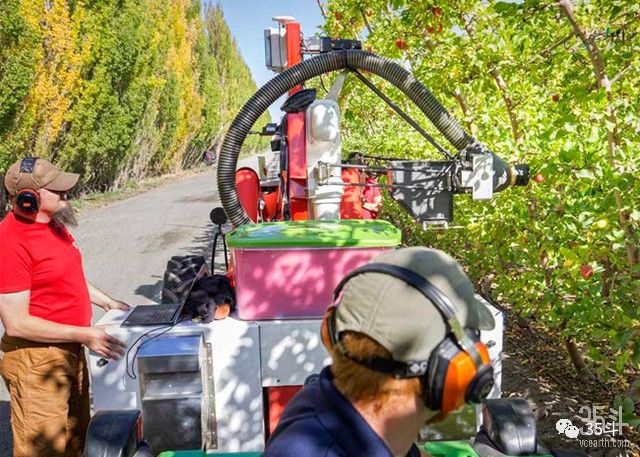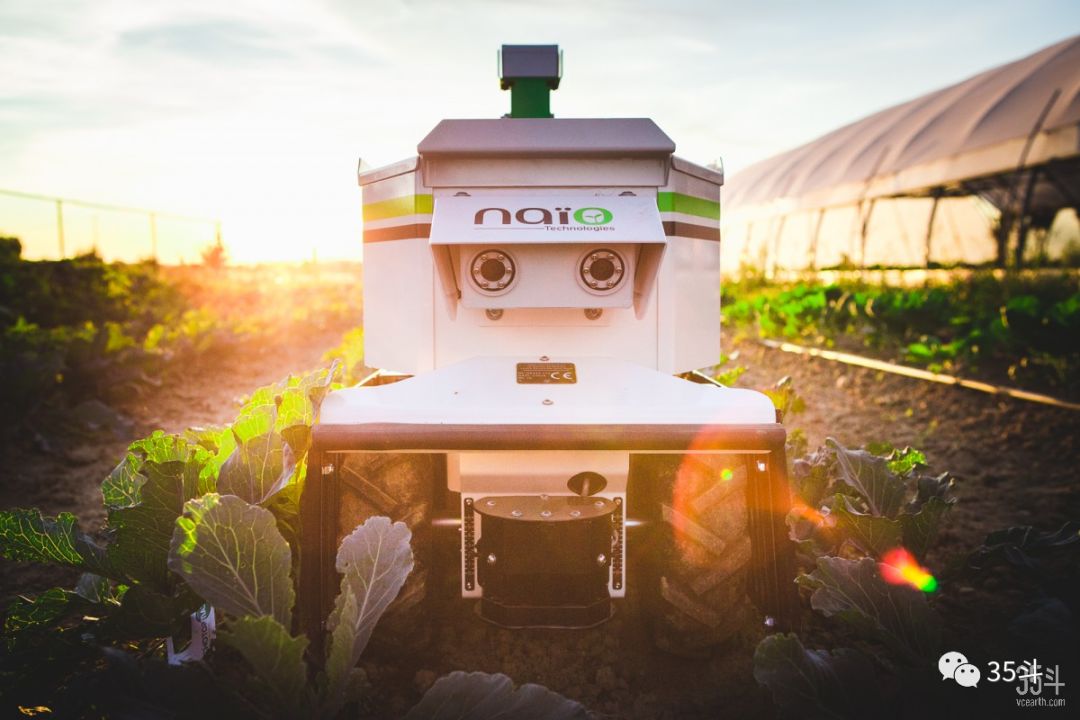To meet growing food needs, rapidly increasing food production is a daunting task.
Editor’s note: This article is from WeChat public account “35 bucket” (ID: vcearth ), the author is Yan Bao.
This article is a draft of 35 buckets. The author is an assistant researcher of the Institute of Agricultural Science and Technology of Shanghai Academy of Agricultural Sciences, Yan Yanbao. He graduated from China Agricultural University and is mainly engaged in the digitization of production processes, expert systems and intelligent decision-making. Application research of information technology such as support systems in agriculture. Participated in the key projects of Shanghai Science and Technology Agriculture Development, “Application of Agricultural Information Technology in Agricultural Production and Management”, and the National Tea Industry Technology System Special Project “Development of the Monitoring and Early Warning Information System for Major Pests and Diseases in the Tea Industry Technology System”.
According to the forecast report of the FAO (Food and Agriculture Organization of the United Nations), the total population of the world will reach 9.7 billion by 2050. With the rapid growth of the world’s population, food demand worldwide has also grown rapidly. To meet growing food needs, rapidly increasing food production is a daunting task.
If humans are to provide nutrition for today’s 815 million hungry people and the 2 billion people expected to be added by 2050, this means that the world will need to increase its food production by 60% to 70% to feed more than 2 billion in the future. Population, which means that human beings need to know more intelligently how to grow food crops, need to invest more technology in agriculture, and need to make profound changes to the global food and agricultural system. How can humans feed themselves on the planet of nearly 10 billion people?
Smart Agriculture – a key to unlocking future agriculture
In the next 30 years, the population will grow rapidly (about 26% more than it is now), but the shortage of land resources (less than 5% in the next 30 years) can only work hard from the efficiency of farming.
Smart agriculture refers to the process by which humans obtain food and raw materials more efficiently by applying information technology to the process of growing crops or raising animals.
Unlike precision agriculture, precision agriculture emphasizes variable-rate operations based on specific geographic locations, while smart agriculture emphasizes not only location, but also the variable rate of data, perception of the surrounding environment, and decisions about immediate events. It is a key to opening up future agriculture.
The whole process of intelligent agriculture, like the human body, is simply divided into three parts, with visual and tactile perception parts, as well as brain computing and intelligent decision-making parts.There are hands and feet to use to perform your own part of the behavior. Several parts are indispensable, and information is transmitted to each other for co-processing.
Cloud-based smart farming events and data management (wolfert et al., 2014)
Sensors and the Internet of Things – IntelliSense and Monitoring
Sensors and the Internet of Things have greatly improved human perception of real-world conditions, enabling them to access big data in the first place for analysis and decision making, and largely unattended. Whether it is a weather station, a soil sensor, or a spectroscopic camera, it provides a source of data for industry digitization.
The main applications of the Internet of Things in agricultural technology include precision crop planting, livestock monitoring and management, indoor farming and aquaculture. Mainly through the networking of objects, remote control, predictive maintenance and predictive diagnosis to improve the efficiency of the entire agriculture and reduce costs.
There are many practitioners in this field. For example, a large number of plant factories or vegetable planting sheds built using IoT technology are continuously producing vegetables, and can be reciprocated on an annual basis. The Internet of Things is used to regulate environmental temperature and humidity, light, and nutrient solution. Ratios, etc., use data to drive better production management.
Sentera’s Spectral Camera Products and Data Analysis Platform provides Datian Agriculture with a rapid data acquisition program for crop nutrition diagnosis and pest diagnosis. Maifei Technology has also made efforts in this regard, launched a unique “Mc probe” and intelligent planting system, which improves the efficiency and intelligence level of remote sensing data acquisition and precise application.
Sentera’s Spectral Data Platform
Sentera’s Spectral Camera
< /p>
CropX is an intelligent irrigation company that helps farmers manage irrigation more efficiently through its unique IoT moisture sensors and irrigation controllers, as well as intelligent algorithms.Less water produces more food.
CropX Soil Moisture Monitoring Equipment
Also, using various sensors for public opinion monitoring, pathogen detection, weed monitoring, nutritional diagnosis, growth assessment, and production forecasting, these technologies have revolutionized traditional agriculture, greatly improving production efficiency and production management. At the same time, it also partially achieved the purpose of saving money, improving quality and increasing efficiency.
Artificial Intelligence – Intelligent Analytics, Planning, and Decision Making
Artificial intelligence can greatly improve decision speed and accuracy, achieve fast, accurate and intelligent decision-making, and achieve the goal of improving land productivity and labor productivity. Artificial intelligence is the basic theory, method and technology that uses the software and hardware of a computer to simulate some intelligent behaviors of human beings.
In the agricultural field, soil moisture can be sensed in time by water sensors and irrigation can be guided; pests and diseases can be identified by cameras; crop nutrition diagnosis and fertilizer application strategies can be assisted by remote sensing images; agricultural machinery can be made available through GPS and navigation technology. Fieldwork can be operated independently; price monitoring and early warning can be made through historical price data of agricultural products, and decisions such as crops, environment, and human activities can be comprehensively considered.
At present, the use of intelligent decision-making in the agricultural field is ubiquitous, and the intelligent decision support system established by combining artificial intelligence technology helps farmers to more efficiently determine the output rate of land per unit area within a certain time range. Be the main research and development and application direction of the future.
Artificial Intelligence There are many corresponding technology companies in the agricultural field. Gamaya uses cameras on drones to capture the spectrum of farmer’s fields, analyzes the data using artificial intelligence algorithms, and converts the spectral data into actionable prescription maps, alerting farmers to changes in the field and giving predictions Farmers can use this information to reduce costs, reduce the use of fertilizers and water resources, and grow more crops.
Agrilyst is a company that uses SaaS (Software as a Service) and data analysis to improve indoor agriculture. Its software can capture data from sensors implanted in greenhouses and obtain data on crop growth. The management party improves management efficiency.
CropMetrics is an agribusiness focused on precision irrigation management. Its products and services include VRI optimization (variable rate irrigation), soil moisture detection, and virtual optimizer PRO. VRI (variable rate irrigation) optimizationMaximize irrigation profitability of farmland with topographical or soil variability, further increasing yield and resource utilization.
Gamaya’s services
Similarly, using speech data for natural language understanding, using visual and spectral data to do qualitative and quantitative analysis of agricultural “four emotions” (sentimental, seedling, disease, and disaster), using GPS and gyroscope data to make animals. Behavior monitoring, agricultural machinery scheduling, etc., are inseparable from artificial intelligence technology in the field of agricultural informationization and digitization.
Automated Equipment – Smart Execution
After the aging population of agriculture and the shortage of labor, agricultural automation equipment, robotics, precision navigation technology and automation technology have developed rapidly. For example, robots or intelligent agricultural machines can greatly liberate human hands and achieve savings, quality and efficiency.
AMERICAN ROBOTICS from abroad and Yunsheng Smart in China are optimistic about the market of drones, and they are laid out very early. The two companies mainly do the automation of the whole process of drones, I believe in the near future. The plant protection drones of Dajiang Innovation, Feifei and other enterprises can completely carry out field crop monitoring and pesticide spraying completely independently, and are more intelligent at the implementation level.
Dajiang Innovation Company’s unmanned plant protection machine
With the rapid development of this field, the work previously done by humans is said to be replaced by machines in 2050, because the storage capacity and computing speed of machines in a single field are much stronger than humans. Agricultural machinery companies such as John Deere & Co., CNH Industrial N.V., and AGCO Corporation are gradually cultivating on the road to automation.
John Deere’s intelligent agricultural machinery < /p>
AbunDant Robotics specializes in apple picking robots, using apple vacuum cleaners to suck apples from trees, picking apples at an average speed of 1 per second, achieving 7*24 hours of uninterrupted work, greatly improving work efficiency. .
Abundant Robotics Apple Picking Robot
The French robot company Naio Technologies aims to help farmers complete the weeding task and minimize the use of pesticides and chemicals. The company’s autonomous robots can help farmers to mechanically weed and harvest on vegetable farms.
Naio Technologies’ weeding robot
EcoRobotix is the main field weeding robot. Through machine vision technology, weeds can be accurately identified. Weeds can be sprayed on weeds by robotic arm, which can reduce the use of herbicides by 20 times compared with traditional methods. Work completely autonomously. According to the person in charge of the company, by using the robot, farmers can save 30% of the related costs.
EcoRobotix’s weeding robot
< /p>
Of course, in order to improve the perception, decision-making and execution efficiency, and better meet the needs of the business scene, the above three parts have long been in the middle of you, I have you.
In the face of the pressure of 10 billion people, the important goal of smart agricultural practitioners is to find suitable application scenarios and create products that are just needed to improve the efficiency of the industry, improve the user experience, and create real value for the agricultural industry.
Data, as important as food
With the rapid development of the Internet of Things, the market brought about by data collection and analysis has gradually emerged, especially in the farm sector, which is the main competition target of major IT and cloud service companies.
farmIn the input-output structure, it is particularly dependent on the increase in production efficiency and process, the increase in risk, or the creation of greater benefits. This can have a major impact on production in large-scale planting areas, especially a small change or adjustment.
As humans eat every day, the process of smart farming requires data. Data, like food, drives the development of smart agriculture.
Data such as field environment and meteorological data, crop growth data, and farming operations are transmitted to the cloud through the network. The information application of the cloud integrates decision support technology, and through operation, outputs effective guidance information for farmers or automated equipment. Including irrigation guidance, pest population dynamics, crop nutrition, etc.
The scope of big data in smart agriculture has completely surpassed agricultural production and is affecting the entire food supply chain. Big data is often used to provide predictive farming operations, drive immediate agricultural operations decisions, and reshape business model.
The pre-production planting plan, the agricultural guidance in production, and the post-production logistics sales network are all inseparable from big data technology. In particular, meteorological and climate change data, agricultural insurance and financial data, and remote sensing big data, these three fields are huge in volume and have many practitioners.
FarmLogs is a smart farming company that uses big data technology to monitor the growth of crops. Their products help farmers track various indicators such as heat accumulation, precipitation, and soil composition. Household.
AgDNA is also a company that uses big data to serve precision agriculture. Its products integrate precision planting data, internet of things and artificial intelligence to meet the goal of helping commercial growers increase profits.
John Deere uses the Web Big Data platform to aggregate data from IoT devices such as soil sensors, other farm data, and data that can help farmers optimize production planning and productivity, and more farms through the platform. Main service.
The current situation of a large number of people and a small amount of land determines that the future agriculture must be intensively cultivated as much as possible, vigorously develop smart agriculture, and maximize land productivity and labor productivity. On the road to smart agriculture, we not only pay attention to the improvement of output and quality, but also pay more attention to the improvement of the benefits brought about by the overall allocation of resources, science and technology and balanced human resources.
I believe that with the development of IoT sensor technology, artificial intelligence and the rapid application of automated robot technology, combined with data processing, mining and decision-making technology, the land productivity and labor productivity will be greatly improved, and the deep transformation of traditional agriculture will be realized. In the future, we will be able to solve the human food crisis.

